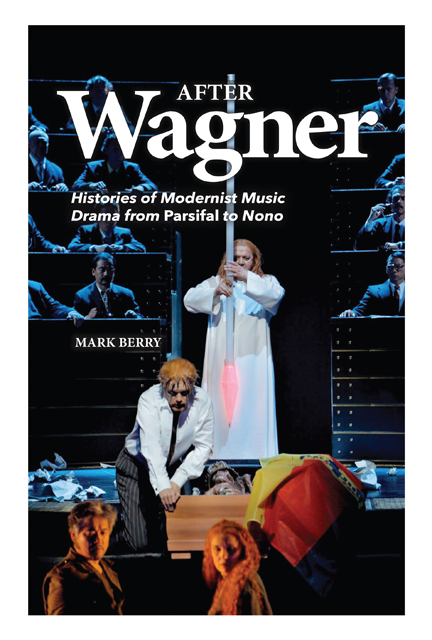Book contents
- Frontmatter
- Contents
- List of Music Examples
- Acknowledgements
- Dedication
- Introduction: ‘After Wagner’
- Part I In the Shadow of German Idealism: From Parsifal to Capriccio
- Part II Composition after the Second World War: From Germany to Italy, and Back Again?
- Part III Performance and the Fruitful Instability of the Work: From Parsifal to Nono
- Bibliography
- Index
2 - Arnold Schoenberg’s ‘Biblical Way’: Towards Moses und Aron
Published online by Cambridge University Press: 24 February 2023
- Frontmatter
- Contents
- List of Music Examples
- Acknowledgements
- Dedication
- Introduction: ‘After Wagner’
- Part I In the Shadow of German Idealism: From Parsifal to Capriccio
- Part II Composition after the Second World War: From Germany to Italy, and Back Again?
- Part III Performance and the Fruitful Instability of the Work: From Parsifal to Nono
- Bibliography
- Index
Summary
Schoenberg, perhaps even more so than Wagner, conceived of his musical and artistic development as a journey. Perhaps even more so than Wagner, Schoenberg was certain of a goal, if uncertain whether it would or even could be reached. This journey was more a seeking after faith than the following of a trustworthy map. As early as 1909, he wrote to Busoni that interpretation of his recent, atonal compositions demanded ‘belief and conviction’. They could only be played by ‘someone, who like yourself, takes the side of all who seek’. Such mystical seeking after faith might seem soon to have been outmoded by the more obvious constructivism of his later works, and not only the twelve-note works, but little is ever outmoded in Schoenberg. Instead, the dialectic became more complicated as the search became more intense. Faith and organisation both oppose and necessitate one another, as does their content. Schoenberg’s early atonal music has been seen on the one hand as amenable to, indeed dependent on, a set of structural definitions, and on the other as a realm of perhaps unprecedented compositional freedom. In Bryan Simms’s words, Schoenberg was keen to experiment ‘with ways by which … “impressionistic” composing could be folded into a newly “worked out” procedure’. At other stages of Schoenberg’s career, ‘worked out procedure’ might be folded into ‘impressionistic’ composition, for, as Michael Cherlin has remarked, ‘a tendency to think in terms of … dialectical oppositions is a basic constituent of Schoenberg’s creativity’.
This chapter attempts to follow part of Schoenberg’s arduous journey. Moses und Aron will be our destination, though it certainly does not represent a terminus for the ideas under consideration. Written between 1927 and 1932, Moses started life as an oratorio text, which was then transformed into the libretto for an opera. Notwithstanding Schoenberg’s continual insistence upon his intention of completion, the work remained unfinished, the only music for the third act amounting to a few sketches. Only the first two acts of the work are usually performed, although the composer sanctioned the possibility of presenting the final act in spoken form. Indeed, there are actually two versions of this final act, the first slightly longer, though Schoenberg seems to have considered the second superior.
- Type
- Chapter
- Information
- After WagnerHistories of Modernist Music Drama from Parsifal to Nono, pp. 64 - 98Publisher: Boydell & BrewerPrint publication year: 2014



